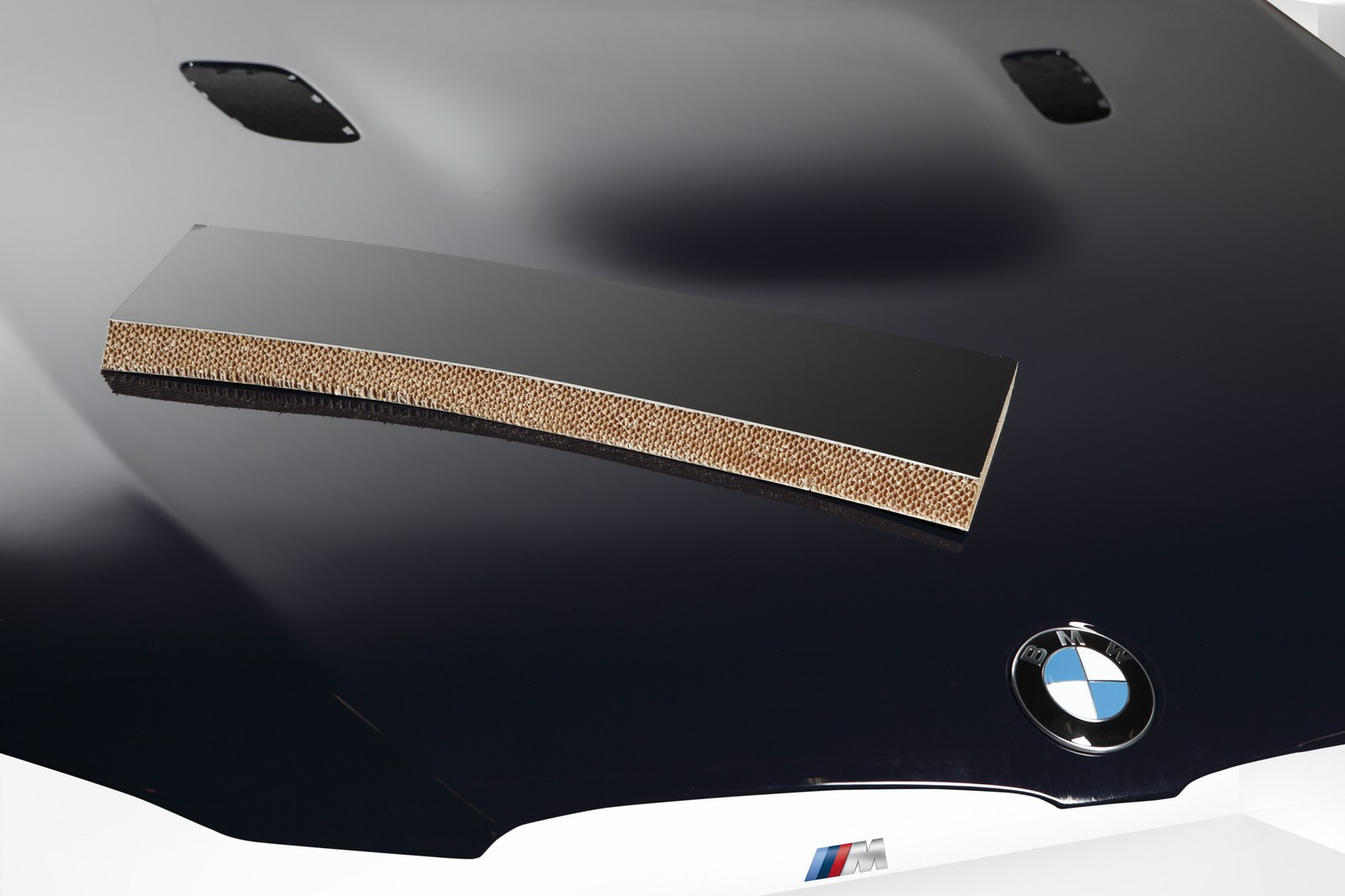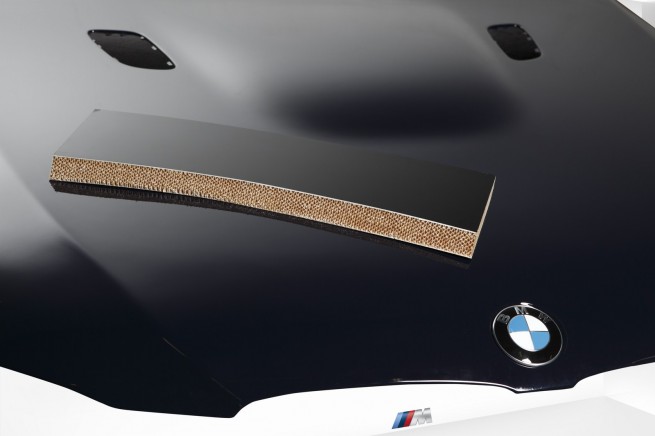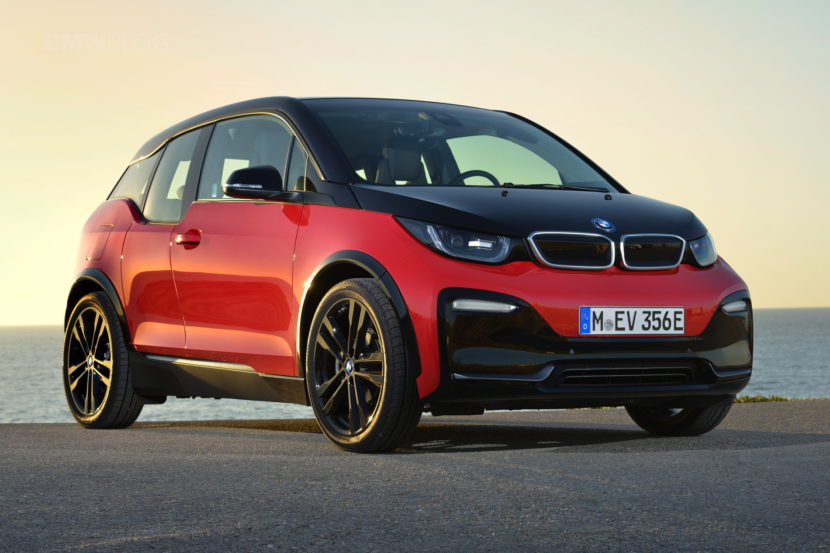New York City – The i3 would not have been built if the vehicle did not have a significant weight advantage over an equivalently sized car. While electrical motors are extremely efficient, much more so than an internal combustion engine, the energy density of batteries is no where near that of gasoline or diesel. And that limits range and performance.
BMW had to ensure that the i3 would have decent alacrity when accelerating and sufficient range to make it palatable for potential purchasers. The key to that for the i sub-brand was reducing weight. So typical steel construction was out. And even an all aluminum chassis would not have paired the requisite weight to ensure the range/performance required of a BMW.
Reducing weight in a vehicle starts a virtuous cycle. Reduce structural weight and you can reduce the weight of the suspension, brakes, and – critically for the i3 – the number, hence weight, of batteries. It was thought carbon fiber reinforced plastic (CFRP) would be an ideal material to build the i3 from subsequently.
But nobody had attempted to mass manufacture a CFRP chassis before. Yes, BMW had experimented with CFRP construction with, among other things, the BMW Z29. And there were small volume cars built by other manufacturers from CFRP – but the hand work and costs were (and are) astronomical for those vehicles. There was no known economically feasible way of using the typical CFRP process, the layup of pre-preg carbon fiber woven cloth, bagging the part so that air can be removed, pulling the air out of the bag with a vacuum, and then curing the bagged part in an autoclave for hours.
BMW had been using CFRP for over 10 years, for M car roof panels as an example. BMW had also begun experimenting with building CFRP panels using a resin transfer molding (RTM) process. In discussing the use of CFRP for the i3 with Mr. Daniel Schaefer, Head of Production Concept BMW i, he mentioned that roof panels are a good place to start when learning how to build CFRP. They are relatively uncomplicated compared to other panels.
And it was emphasized that the process of learning how to build CFRP panels using RTM machinery was the critical piece of the puzzle. The RTM tools, carbon fiber ‘cloth’, and other odds and ends are readily available on the market. What isn’t readily available is the knowledge of how to successfully create a body panel in the short cycle times to allow for profitable production that BMW required for the i3.
BMW uses RTM presses available to anyone. In fact two of BMW’s German competitors have purchased the same presses that BMW uses. What they don’t have is BMW’s exclusive processes or access to specially created carbon fiber ‘yarn’. In talking to Dr. Joerg Pohlmann, Managing Director SGL Automotive Carbon Fibers, BMW does not use one of the off-the-shelf carbon fiber products that SGL produces, rather BMW gets a bespoke (custom) product from SGL.
In addition, BMW does not use a typical woven fabric to produce the pre-forms for the body panels. It is another piece of the experience that has led them to a highly optimized process. What Mr. Schaefer explained is that BMW’s years of carbon fiber experience produces a method (patented process) that allows them to quickly inject resin under very high pressure on one side of a complex mold and pull air and the resin through the mold with a vacuum in a very short period of time.
When you think about the process of injecting resin into multiple layers of specially ‘sewn’ carbon fibers – each oriented at a slightly different, but specific, angle for strength – and ensuring that the resin has penetrated evenly to every cubic micrometer of the panel, then heating it to cure and pulling the whole piece, complete, from the press in less than ten minutes, your head will spin. And it is this specific knowledge that separates BMW from its competitors.
One estimate was that it would take around five years of experimentation (and a very good engineering staff) to arrive at where BMW is at today with the CFRP process. That explains a lot about why Toyota was interested in working with BMW. (Read Bertel Schmitt’s article on the LF-A http://www.thetruthaboutcars.
And while carbon fiber, kg-to-kg, is more expensive than aluminum or steel, a kg of carbon fiber ‘stretches’ a bit further than either aluminum or steel and requires fewer production steps than steel (for example). It is in the energy/water savings in the production process that will make CFRP profitable. And BMW has stated that the i3 will be profitable.
Given BMW’s head start in mass production of CFRP panels, where are they headed? BMWblog asked Dr. Pohlmann if the SGL facility at Moses Lake, WA has room for expansion and he answered in the affirmative. In addition there is sufficient hydro-electric power available to expand and produce carbon fiber. When asked about the cost of the carbon fiber, Dr. Pohlmann mentioned that is was a bit less expensive than other producers given the cost of the electricity used, but certainly not a huge difference. But when you are contemplating expanding the production of CFRP body panels, every little bit helps the bottom line.
It’s a long trip from polyacrylonitrile (PAN) fiber to a completed CFRP body panel; from Moses Lake, WA USA, to Wackersdorf, Landshut, and eventually Leipzig, Germany, but the i models could not have been realized without BMW’s CFRP production processes.







































































